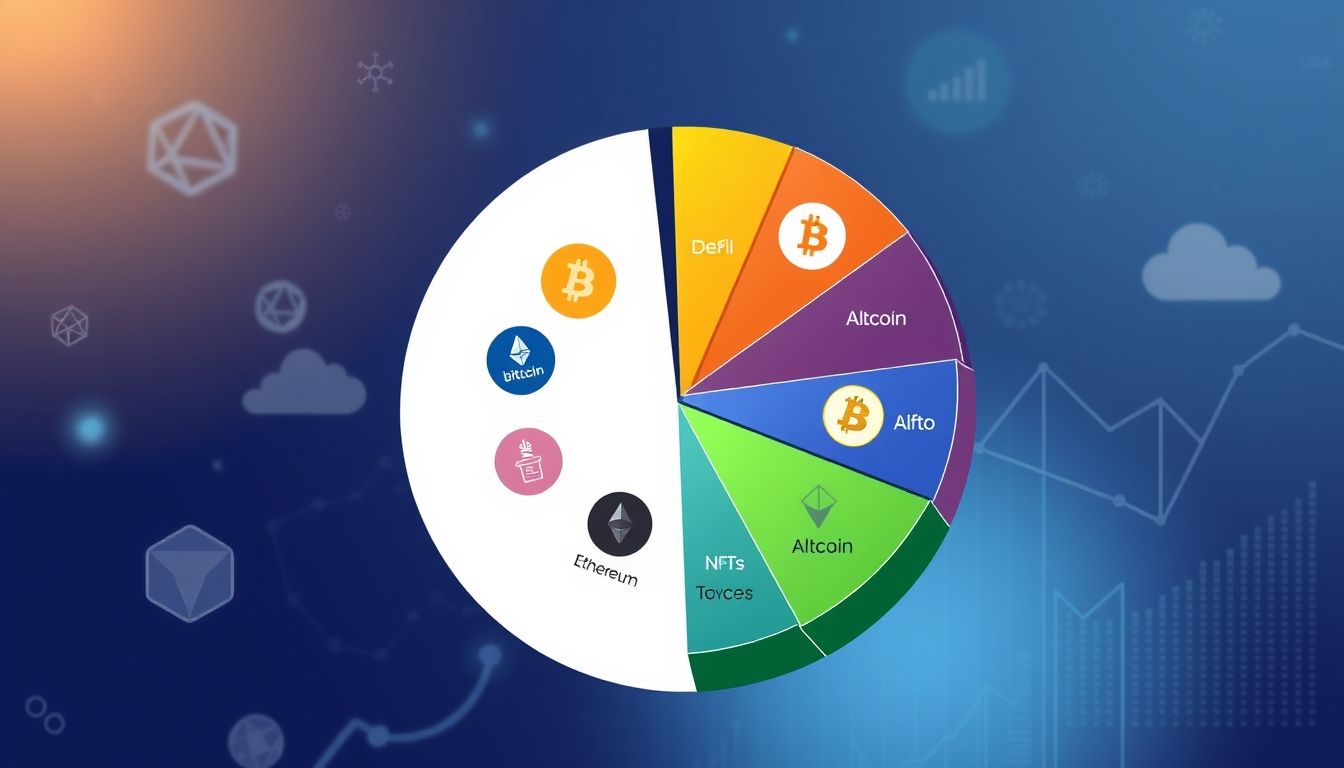Introduction: HODL and Long-Term Investing in the Crypto World
In the volatile world of cryptocurrencies, the term "HODL" stands out as a long-term investment strategy, based on holding digital currencies regardless of market fluctuations. This strategy, which originated from a misspelling of the word "Hold" in a forum, has become a well-established investment philosophy for many.
Long-term investing in crypto is not just about HODLing, but also includes careful research and analysis, portfolio diversification, and effective risk management. This article aims to provide a comprehensive guide on HODL and long-term crypto investing strategies, to help you achieve your financial goals in this emerging market.
Chapter 1: Understanding the HODL Philosophy and its Origins
What is HODL?
HODL is simply holding cryptocurrencies for the long term, regardless of price fluctuations. Followers of this strategy believe that the true value of cryptocurrencies will emerge in the long run, and that trying to day trade or short-term speculate often leads to losses.
The Origin of the Term HODL
The term HODL originated in 2013, when a BitcoinTalk forum user wrote a post titled "I AM HODLING". The user was expressing frustration with Bitcoin's price fluctuations and announced that he would hold his Bitcoin no matter what. The misspelling of the word "Holding" led to the emergence of a new term, which quickly spread and became part of crypto culture.
Why Does HODL Work?
The success of HODL depends on several factors, including:
- Avoiding Emotional Decisions: Traders often make hasty decisions based on fear or greed, leading to losses. HODLing helps avoid these emotional decisions.
- Benefiting from Long-Term Growth: If you believe in the true value of a cryptocurrency, HODLing allows you to benefit from its growth over the long term.
- Saving Time and Effort: HODLing does not require constant market monitoring or frequent trading decisions, saving time and effort.
Chapter 2: Choosing the Right Cryptocurrencies for Long-Term Investment
Research and Fundamental Analysis
Before investing in any cryptocurrency, it is essential to conduct thorough research and fundamental analysis. This analysis should include:
- Understanding the Underlying Technology: What problem is the cryptocurrency trying to solve? What technologies does it use?
- Evaluating the Founding Team: Who are the people behind the project? What are their experiences and qualifications?
- Analyzing the Market and Competition: What is the potential market size for the cryptocurrency? Who are the main competitors?
- Studying Tokenomics: How are the cryptocurrencies distributed? What are the governance mechanisms?
Examples of Promising Cryptocurrencies
There are many promising cryptocurrencies that can be considered for long-term investment, including:
- Bitcoin (BTC): The first and most famous cryptocurrency, considered a digital store of value.
- Ethereum (ETH): A decentralized platform for smart contract applications, with huge growth potential.
- Cardano (ADA): A third-generation blockchain platform, focusing on sustainability and scalability.
- Polkadot (DOT): A protocol that connects different blockchain chains, allowing for the exchange of data and assets.
Warning Signs to Watch Out For
You should be wary of cryptocurrencies that show the following warning signs:
- Unrealistic Promises: If the project promises huge and quick returns, it is likely a scam.
- Unknown Team: If the founding team is not transparent about their identity and experiences, it is best to avoid the project.
- Weak Community: If there is no active community supporting the project, it may be a sign of lack of interest.
- Lack of Transparency: If the project is not transparent about its operations and decisions, it is difficult to trust it.
Chapter 3: Diversifying Your Crypto Investment Portfolio
Why is Diversification Important?
Diversification is key to managing risk in any investment portfolio, including a crypto portfolio. By distributing your investments across a variety of cryptocurrencies, you can reduce the impact of any potential loss on your entire portfolio.
How to Diversify Your Crypto Portfolio
There are several ways to diversify your crypto portfolio, including:
- Investing in a Variety of Cryptocurrencies: Don't put all your money into one cryptocurrency. Invest in a variety of currencies with different growth potentials.
- Investing in Different Sectors: Invest in cryptocurrencies that represent different sectors, such as Decentralized Finance (DeFi), Non-Fungible Tokens (NFTs), and Blockchain Infrastructure.
- Investing in Projects at Different Stages: Invest in projects at different stages of development, from emerging projects to established projects.
Determining the Allocation Ratio for Each Currency
Determining the allocation ratio for each cryptocurrency depends on several factors, including:
- Your Risk Tolerance: If you are highly risk-tolerant, you can allocate a larger percentage of your portfolio to more volatile cryptocurrencies.
- Your Investment Goals: If you are looking for rapid growth, you can allocate a larger percentage of your portfolio to high-potential cryptocurrencies.
- Your Belief in the Project: If you strongly believe in a particular project, you can allocate a larger percentage of your portfolio to its cryptocurrency.
Chapter 4: Managing Risks in Long-Term Crypto Investments
Understanding the Risks Associated with Crypto
Crypto is a highly volatile market, and there are many risks associated with investing in it, including:
- Price Volatility: Cryptocurrency prices can experience significant fluctuations in a short period.
- Regulatory Risks: Changes in laws and regulations may affect the value of cryptocurrencies.
- Security Risks: Crypto wallets can be hacked and stolen.
- Technological Risks: Cryptocurrencies may face technical problems that affect their value.
Developing a Risk Management Strategy
To manage risks in long-term crypto investments, you should develop a solid strategy that includes:
- Determining the Appropriate Investment Size: Do not invest more than you can afford to lose.
- Setting Stop-Loss Orders: Set stop-loss orders to protect your investments from large losses.
- Rebalancing the Portfolio Regularly: Rebalance your portfolio regularly to maintain the target allocation ratio for each currency.
- Diversifying Information Sources: Do not rely on a single source of information. Conduct research and analysis from multiple sources.
Available Risk Management Tools
There are many tools available to manage risks in crypto investments, including:
- Stop-Loss Orders: Allow you to automatically sell your cryptocurrencies if their price falls to a certain level.
- Take-Profit Orders: Allow you to automatically sell your cryptocurrencies if their price rises to a certain level.
- Portfolio Tracking Tools: Allow you to track your portfolio's performance and monitor risks.
Chapter 5: Understanding the Crypto Market Cycle and Preparing for It
What is the Crypto Market Cycle?
Crypto markets are characterized by recurring cycles of rise and fall. Each cycle consists of four main stages:
- Accumulation: A relatively quiet phase, where smart investors begin buying cryptocurrencies at low prices.
- Uptrend: A phase of rapid price growth, where the market attracts widespread attention.
- Distribution: A phase where prices begin to stabilize, and early investors begin selling their assets.
- Downtrend: A phase of sharp price declines, where fear and panic prevail in the market.
How to Prepare for Different Market Cycles
To prepare for different market cycles, you should:
- Understand Market History: Study past cycles to identify patterns and trends.
- Develop a Long-Term Investment Plan: Do not let market fluctuations affect your long-term plan.
- Avoid Emotional Decisions: Do not buy at the peak of the market and do not sell at the bottom of the market.
- Be Patient: Remember that investing in crypto is a long-term game.
Strategies for Benefiting from Market Cycles
You can benefit from market cycles by:
- Buying at the Bottom: Buy cryptocurrencies when prices are low.
- Selling at the Top: Sell cryptocurrencies when prices are high.
- Dollar-Cost Averaging: Buy a fixed amount of cryptocurrencies at regular intervals, regardless of the price.
Chapter 6: Taxes and Regulations Related to Crypto
Understanding Taxes on Crypto Profits
Crypto profits are subject to taxes in most countries. You must understand the local tax laws and report your profits correctly. Taxes may include:
- Capital Gains Tax: Imposed on profits from the sale of cryptocurrencies.
- Income Tax: Imposed on income from crypto activities, such as mining or staking.
Complying with Local and International Regulations
You must comply with local and international regulations related to crypto, including:
- Know Your Customer (KYC) Rules: Require crypto trading platforms to verify your identity.
- Anti-Money Laundering (AML) Rules: Aim to prevent the use of crypto in illegal activities.
Tips for Maintaining Accurate Records
To ensure tax compliance, you should keep accurate records of all crypto transactions, including:
- Date and time of the transaction.
- Type of cryptocurrency.
- Amount of cryptocurrency.
- Price of cryptocurrency at the time of the transaction.
- Transaction fees.
Chapter 7: Securing Your Crypto Wallet
The Importance of Securing Your Crypto Wallet
Securing your crypto wallet is crucial to protect your digital assets from theft and hacking. There are many ways to secure your wallet, including:
Different Types of Crypto Wallets
There are several types of crypto wallets, each with its advantages and disadvantages:
- Hardware Wallets: Considered the most secure, as they store your private keys on a physical device that is not connected to the internet.
- Software Wallets: Are applications that can be installed on a computer or smartphone, and provide easy access to your funds.
- Web Wallets: Are online wallets, and provide easy access to your funds from anywhere.
- Paper Wallets: Are paper documents containing your private keys, and are considered a safe way to store cryptocurrencies for the long term.
Best Practices for Securing Your Wallet
To maximize the security of your wallet, follow these best practices:
- Use strong and unique passwords: Use complex passwords that are difficult to guess.
- Enable Two-Factor Authentication (2FA): Add an extra layer of security to your accounts.
- Keep a backup of your private keys: Keep a secure backup of your private keys in a safe place.
- Update wallet software regularly: Update wallet software regularly to fix security vulnerabilities.
- Avoid sharing your private information: Do not share your private information with anyone.
Chapter 8: Staking and Lending in Crypto as Passive Income Strategies
What is Staking?
Staking is the process of holding cryptocurrencies in a wallet to support a blockchain network and earn rewards. Staking is a way to earn passive income from your crypto holdings.
What is Crypto Lending?
Crypto lending is the process of lending your cryptocurrencies to borrowers and earning interest. Lending can be a profitable way to earn passive income from your crypto holdings.
Risks and Rewards of Staking and Lending
Staking and lending involve risks and rewards. Risks include price volatility, counterparty risk, and liquidity risk. Rewards include the potential to earn passive income and increase your crypto holdings.
Chapter 9: Building a Supportive Community and Sharing Knowledge
The Importance of Joining Crypto Communities
Joining crypto communities can provide you with support, encouragement, and knowledge. Communities can help you stay informed about the latest developments in the crypto world and connect with other investors.
Reliable Sources of Information
It is important to rely on reliable sources of information when making crypto investment decisions. Reliable sources include:
- Specialized crypto news sites.
- Research reports from specialized companies.
- Trusted influencers in the crypto field.
Avoiding Misinformation and Fraud
You should be wary of misinformation and fraud in the crypto world. Do not trust anyone who promises huge and quick returns. Do your own research before making any investment decisions.
Chapter 10: Conclusion and Final Tips for Successful Crypto Investing
Investing in crypto can be very profitable, but it is also risky. By following HODL and long-term investment strategies, managing risks effectively, and building a diversified investment portfolio, you can increase your chances of success in this emerging market.
Final Tips:
- Be Patient: Investing in crypto is a long-term game.
- Don't invest more than you can afford to lose: Don't put all your money into crypto.
- Stay informed: Keep up with the latest developments in the crypto world.
- Enjoy the journey: Enjoy learning more about crypto and building your investment portfolio.
Disclaimer: This article is for informational purposes only and does not constitute financial advice. You should consult a qualified financial advisor before making any investment decisions.




